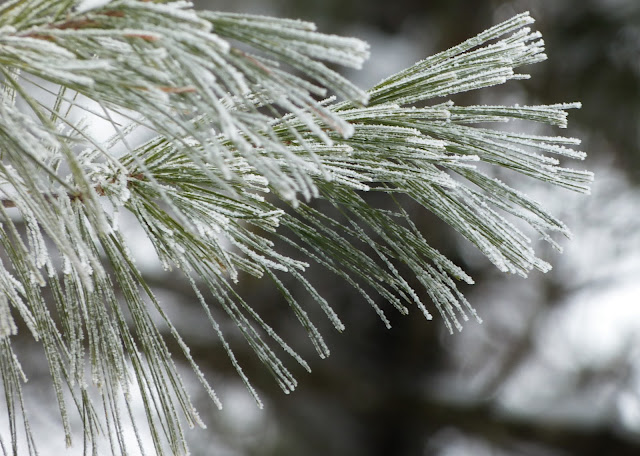Enduring and Enjoying a Wintry Landscape Redux
The original version of this piece was published in 2019. Below is a revised writing.
On mornings like these, I feel a false sense of kinship with those who live in Arctic regions. I prepare myself for the journey into town by piling on my winter coat, scarf, mittens, and boots, which yet all so readily accompany me outside the doors of my warm and sleepy home. As I start through the doorway, a swell of cutting wind immediately pushes up from the lowlands of my property and embraces my whole being in a deep chill. The firs and pines towering around the house sway and shutter alongside me. But none of us show signs of concern over the conditions around us this far into "spring." This is life in the Northwoods.
Life in northern Wisconsin is not really the same as that in the Arctic - the view of trees outside my house alone tells me that. It's a unique experience to live in - to endure - the conditions this special place has to offer. Our brief summer heat still allows us to plummet into the teeming waters of Lake Namakagon, and each year, by the time late-blooming asters and goldenrods reach peak beauty, I have all but forgotten the struggles of winter. And as soon as that shift back towards winter does occur, the snow, ice, and cold again dictate all life here.
People here so proudly adapt and endure. We find many ways to move through the landscape, among the snow and ice. I've personally traveled around my former homesite of Lake Namakagon by foot, ski, snowshoe, snowmobile, sled, and even sliding on my bottom. The conditions outside have rarely left my neighbors or myself feeling as if we didn't have the tools or tenacity to navigate our landscape.
Once I penguin-walk to my car and shut my driver's door to the relentless wind, I continue my morning inside the Museum. I walk past a preserved snowy owl on my way back to the office, and I'm reminded that the plants and animals outside must adapt and endure as well.
When that owl was alive, she would have been perfectly suited for life in wintry landscapes like ours. Her plumage helped her to both camouflage against a white environment and, in its abundance, provided ample insulation against the cold Arctic air. At home in the far northern tundra, she would have been able to wait patiently for small rodent and bird prey to eat.
It's no coincidence that the willow ptarmigan, a snowy owl's occasional prey in their northern range, also dons a thick coat of snow-white feathers. Ptarmigans need their winter colors to blend into the white landscape as snowy owls search for signs of life.
Willow ptarmigans were a surprise part of the collection when I came to our Museum of regional natural history. Although this member of the grouse family wouldn't actually have roamed this far south, they do share with us southerners a comparable story of life in the snow.
Ptarmigans have their hardy foot feathers for warmth and added surface area to navigate an Arctic landscape. Ruffed Grouse - their relatives who do live around here - use a different set of snowshoes. As grouse don't generally experience such a prolonged need for winter gear, they've developed seasonal footwear. Each autumn, growths of skin called pectinations develop on the sides of their toes and fall off every spring. Despite calling different places home, owls, ptarmigans, and grouse are built to weather the same types of challenges.
Most wintry days, I feel just as adept at surviving these harsh conditions as those birds in our collection. I've learned to travel safely through thick snow or sleek ice, and so far have never found myself in true danger when conditions feel unbearable. While I might not say the same if transplanted to the Arctic, I'm pretty proud to consider myself among those who are capable of enduring - and dare I say enjoying - Wisconsin's wintry April landscape.



